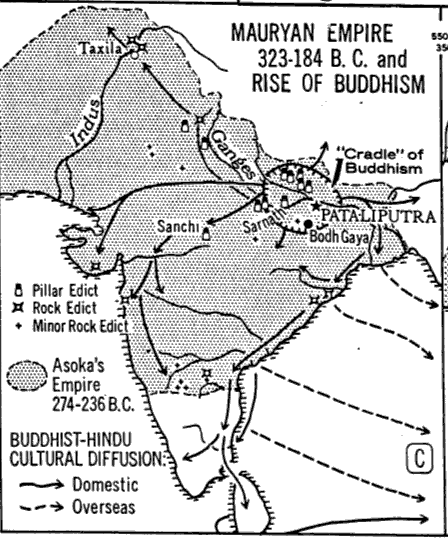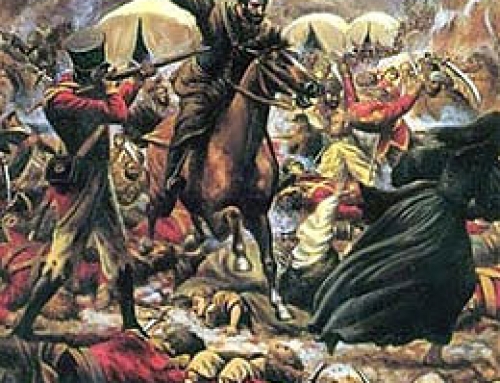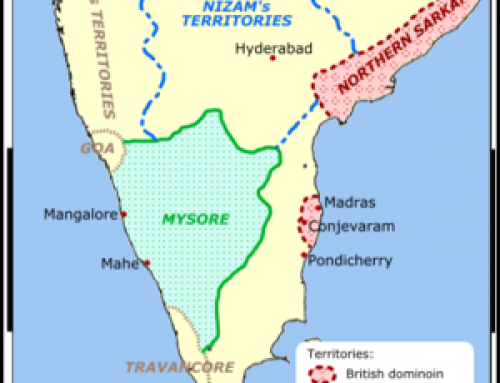THE POLITICAL HISTORY OF THE MAURYAN RULERS
Chandragupta Maurya (322 – 298 B.C.)
- Chandragupta Maurya was the first ruler who unified entire country into one political unit, called the Mauryan Empire.
- He had captured Pataliputra from Dhanananda, who was the last ruler of the Nanda dynasty.
- He didn’t do achieve this feat alone, he was assisted by Kautilya, who was also known as Vishnugupta or Chanakya. Some scholars think that Chanakya was the real architect of this empire.
- After establishing his reign in the Gangetic valley, Chandragupta Maurya marched to the northwest and conquered territories upto the Indus. In the north, he occupied the region north of river Narmada.
- In 305 B.C., he defeated Selukas Niketar, who was controlling the northwestern part of India that was under greek control.
- A treaty was concluded, under which, Selukas Niketar ceded the territories of Kabul, Kandhar, Herat, Baluchistan – to the Mauryan Empire. He gave his daughter in marriage to the Mauryan Prince.
- Seleucus sent Megasthenes to the Mauryan court as Greek ambassador.
- Greeks called him Sandrocottas.
- He established a vast empire, extending from Afganistan to Assam and from Kashmir to Karnataka(except Kalinga).
- Later in life, Chandragupta embraced Jainism and stepped down from the throne for his son Bindusara to take over. Thereafterm he went to Sravana Belgola, in Karnataka along with Jain monks who were led by Bhadrabhagu and starved himself to death.
Bindusara (298 – 273 B.C.)
- Some scholars believe Bindusara conquered the Deccan areas up to Mysore.
- Taranatha, the Tibetan monk mentionss that Bindusara conquered sixteen states consisting ‘the land between the two seas’.
- Bindusara maintained friendly relations with Hellenic world. He received Dionysius as ambassador from Ptolemy Philadelphus of Egypt.
- Bindusara supported the Ajivikas sect.
- Bindusara appointed his elder son Susima as governor of Taxila and Asoka as the governor of Ujjain.
Asoka the Great (273 – 232 B.C.)
- About his early life, only few things are known. He served as Governor of Ujjain and also took care of Taxila during his father Bindusara’s reign to help his brother who was facing revolt.
- It is clear from the buddhist sources that the succession of Asoka was a disputed one.
- Hewas the first ruler in Indian history who has left his records on engraved stones.
- His inscriptions are found in India, Pakistan, Afghanistan, Nepal at 47 places.
- His name is found on only the copies of Minor Rock eddict I at 1 place in MP and 3 places in Karnataka.
- At every other incription found on ancient highways, he is refered to either as ‘Devanampiya’ or as ‘piyadasi’.
- $ different scripts have been used on his incriptions. Greek and Aramaic in Afghanistan; Kharoshti script and Prakrit language in Pakistan; Brahmi script in prakrit language at other places.
- The most important event of Asoka’s reign was his war with Kalinga in 261 B.C.about which he has mentioned in the Rock edict XIII. This describes in detail the horrors of war, that deeply disturbed him.
- Under the effect of Kalinga war, Asoka embraced Buddhism by the influence of Buddhist monk, Upagupta.
- Extent of Asoka’s Empire: Ashoka added Kalinga to his territory.
Asoka’s Dhamma (moral law)
- Although Asoka embraced Buddhism as his religion and took steps to spread Buddhism, he did not forced Buddhist ideals on his subjects.
- He respected all sects and faiths, this is mentioned in Rock Edict VII. And in Rock Eddict XII he mentions his policy of equal respect to all religious faiths and sects.
- After the Kalinga war, Ashoka propagated Dhamma or moral law across his empire.
- Dhamma was a way of life, a set of principles and a code of conduct that is to be adopted and practiced by the people at large.
- The principles of Dhamma were clearly mentioned in his Edicts. Their main features, as mentioned in his various Edicts are:
1. Service and obedience to father and mother, teachers, and good treatment of relatives.
2. Prohibition of animal sacrifices (ahimsa) and festive gatherings.
3. Efficient organization of administration for social welfare and maintaining constant contact with the people through the Dhammayatras system.
4. Proper and Humane treatment of servants by masters and of prisoners by government officials.
5. Consideration and non-violence to animals and courtesy to relations, ascetics, dependents and liberality to Brahmins, friends, acquaintances, companions.
6. Tolerance for all the religious sects.
7. Conquest of people through Dhamma instead of war. Truthfulness and attachment to morality.
Estimate of Asoka
-
It is said that Asoka was “the greatest of kings” who surpassed Alexander the Great, Julius Caesar and every other renowned Emperors to have ruled the world. - Asoka was true to his ideals.
- He was not a dreamer but a man of practical genius who explained the relationship between a king and his subjects in a very simple and noble language.
- He is the only king in human history who apologised to his subjects for waging a war against them, which caused suffereings.
- His concept of Dhamma is so universal that it is applicable to humanity even today.
- Therefore, his reign is considered one the “rare and lightening epochs in the annals of nations.”
- His never imposed his personal belief in Buddhism over his subjects.
Later Mauryas
- After Asoka’s death in 232 B.C., there were 7 kings within a span of 50 years.
- After him, the Mauryan Empire was divided into two parts – western and eastern.
- The western part was under the rule of Kunala, Samprati and others.
- The eastern part was governed by Dasaratha, Brihadath and others
- Following the invasions by Greeks, the Mauryan king had lost support from both army and its people. The last Mauryan king Brihatratha, was assassinated by Pushyamitra Sunga, his commander-in-chief.
Just after 50 years to the death of Ashoka, the Mauryan empire fell apart. This has been attributed to his weak successors who could not keep the vast empire intact. Partly the blame is put on the pacifist policies of Ashoka which caused a decline in the military powers of the empire. Some scholars argue that, Ashoka’s welfare policies must have been very extravagant that caused a downfall of treasury, and hence leading to a weakened economy.
<< Read about Geography Study notes here >>





